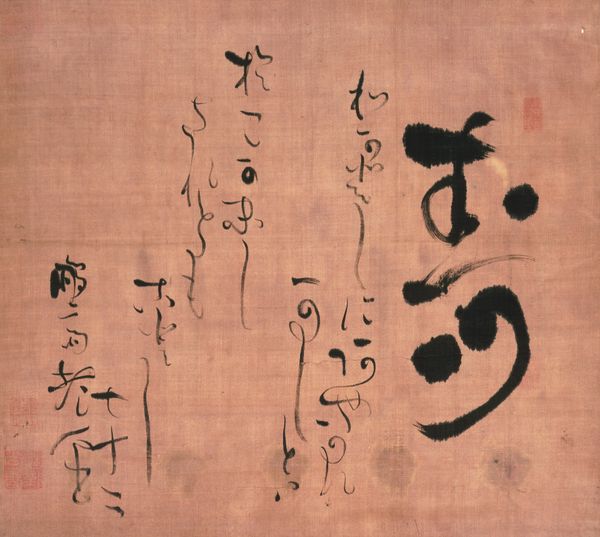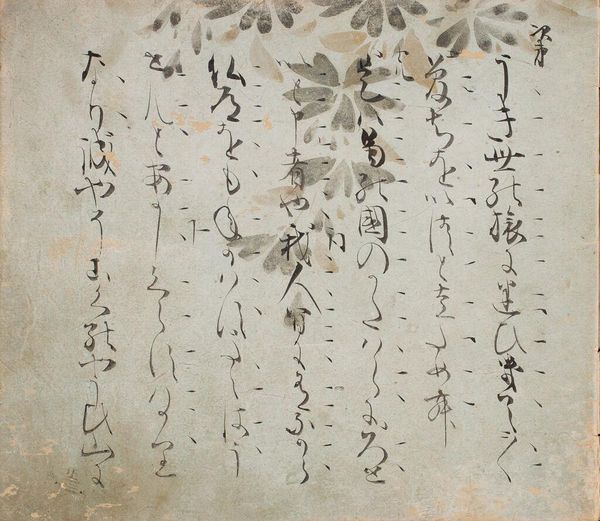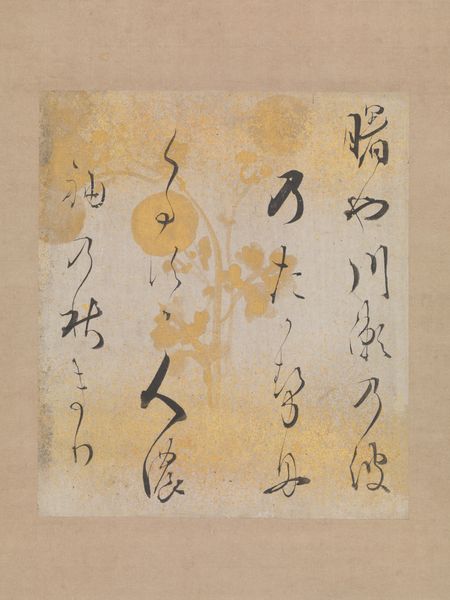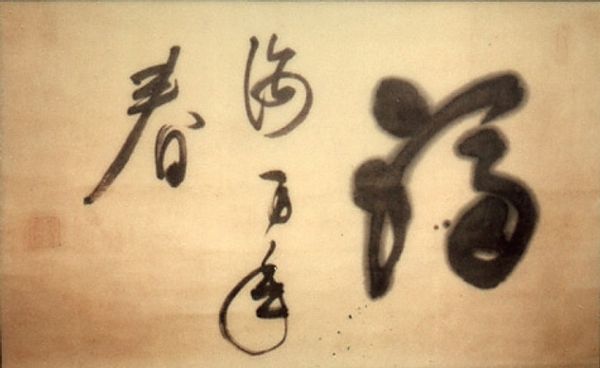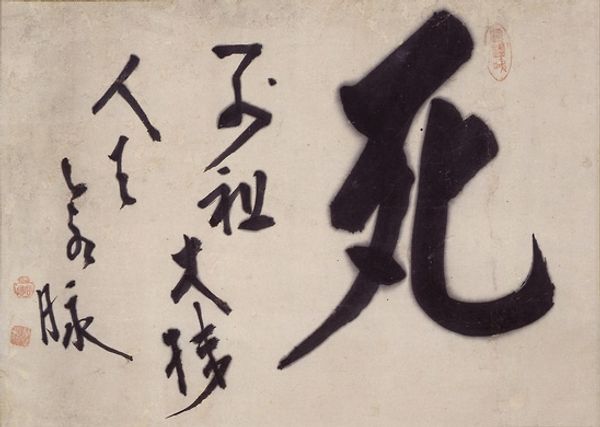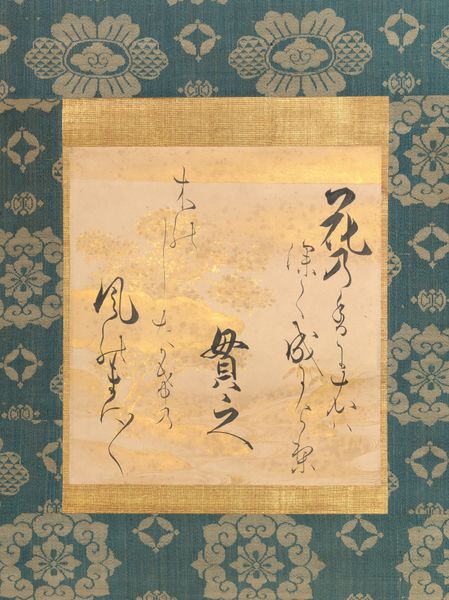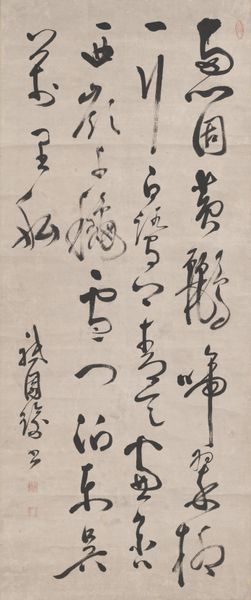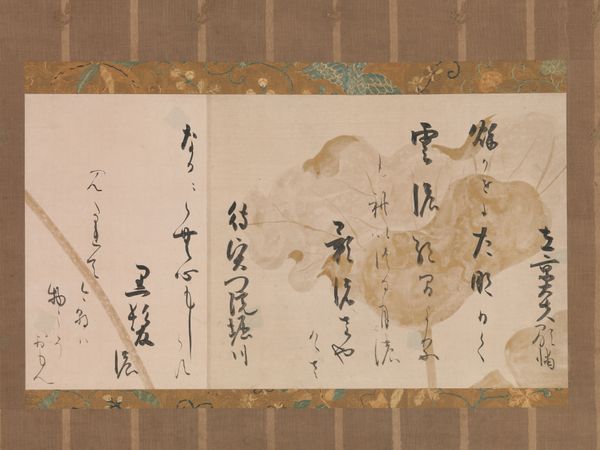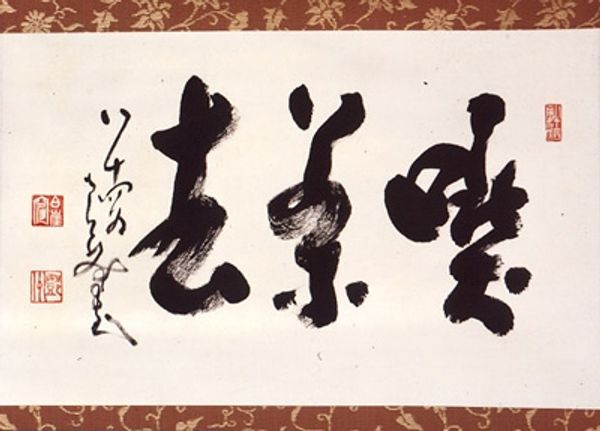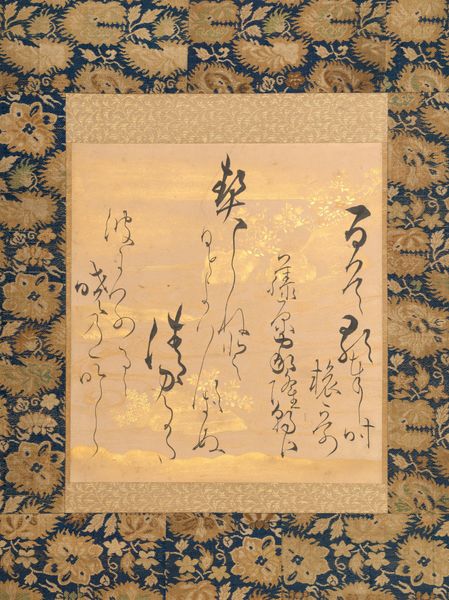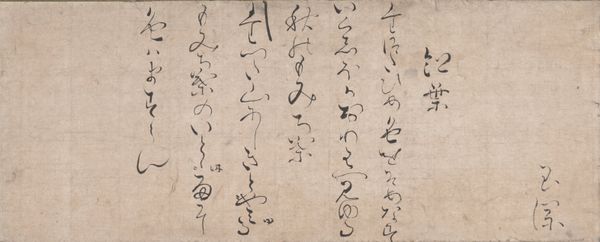
Twelve Poems from the New Collection of Poems Ancient and Modern 1550 - 1700
0:00
0:00
textile, paper, watercolor, ink
#
water colours
#
asian-art
#
textile
#
paper
#
form
#
watercolor
#
ink
#
geometric
#
orientalism
#
line
#
watercolor
#
calligraphy
Dimensions: Image: 13 3/8 in. × 16 ft. 1/8 in. (34 × 488 cm)
Copyright: Public Domain
Editor: So, here we have Hon'ami Kōetsu's "Twelve Poems from the New Collection of Poems Ancient and Modern," created sometime between 1550 and 1700. It’s ink and watercolor on paper, a textile piece held by the Met. What do you see in this piece, focusing on its material construction? Curator: Immediately, the choice of paper as textile raises interesting questions. This is not merely a support, but a conscious act of elevating a utilitarian material. Note the application of watercolor and ink: are these locally-sourced materials? Was the textile prepared in a special way? Editor: That’s a good question! I hadn't considered the source of the materials themselves. Curator: Absolutely. Also, think about the labor involved. Someone cultivated the plants, prepared the fibers, wove the textile. Another prepared the inks and pigments and applied them with meticulous skill. It invites us to reflect on the social context of its creation. Who had access to such materials and skills? How might its creation have reinforced existing social hierarchies or even subtly subverted them? Does the inscription shed any light on that? Editor: That’s fascinating! Thinking about all the stages of production really shifts my focus. I was initially drawn to the calligraphy, but now the materiality tells a whole other story. Curator: Precisely! The beauty is inextricable from its means of production. What started as mundane materials transform through skill and intention. By recognizing this, we challenge any notion of pure, disembodied aesthetics. We acknowledge art is inherently connected to the world, to labour, and to social structures. Editor: So, analyzing its materiality really roots the artwork in its social context. Curator: Exactly! And by doing so, we democratize the conversation around art, moving it beyond just taste to address material reality. Editor: That gives me a lot to think about – thank you for the insight! Curator: My pleasure! It's exciting to see such old artworks with a fresh, modern understanding of labor and production!
Comments
No comments
Be the first to comment and join the conversation on the ultimate creative platform.

